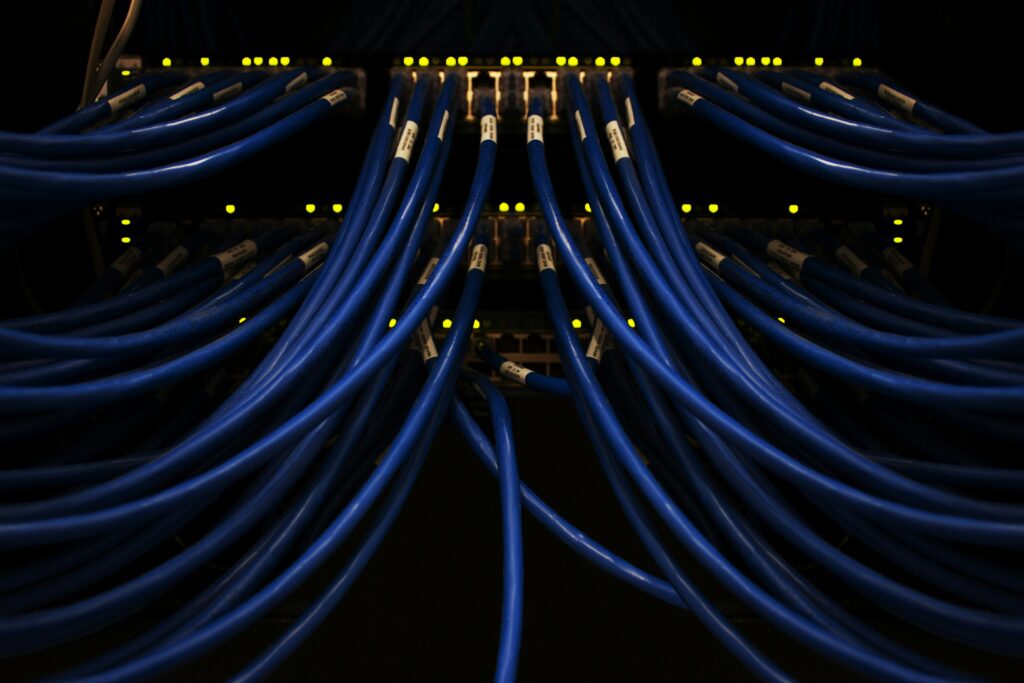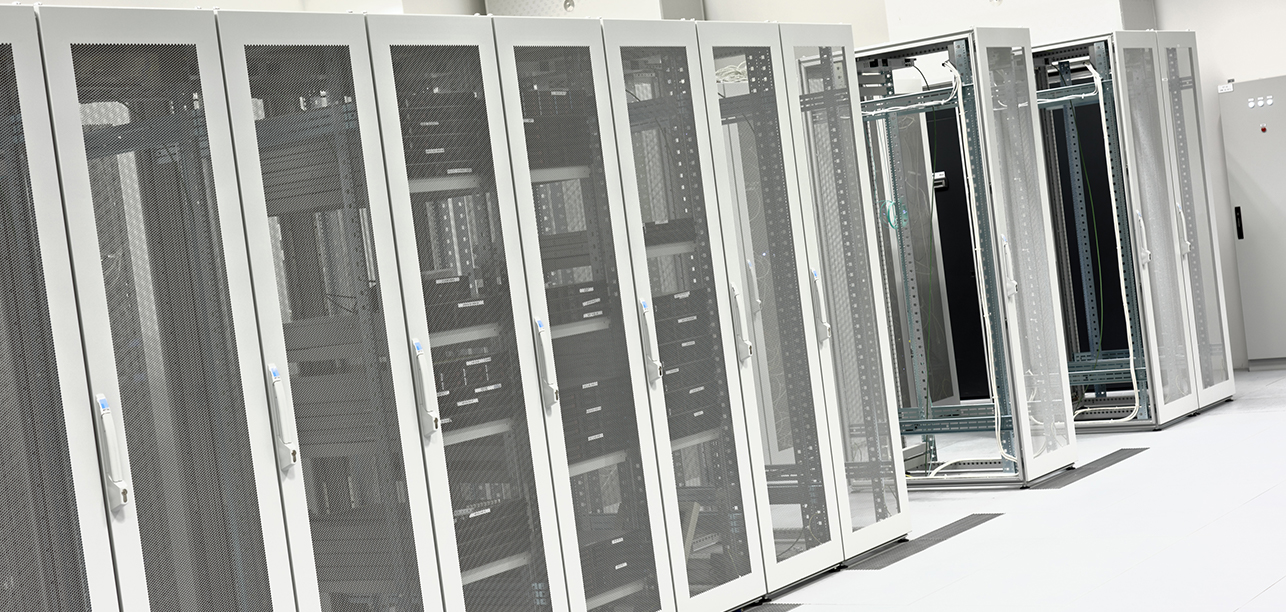Month: February 2015

Bare Metal vs Hypervisor: The Evolution of Dedicated Servers
With the “cloudification” of IT, new terms have appeared across the hosting industry. Some of the most popular terms are bare metal and hypervisor. But what are these? Let’s clarify the bare metal first. To answer simply, a bare metal server is your traditional dedicated server with a hip new name for the cloud generation! Let’s have a look at what a bare metal vs hypervisor is.

What is Bare Metal?
Bare metal is a single tenant server. This means only you are taking the resources of the server. The server belongs to you and you only. Compared to the cloud model where multiple users (multi-tenancy) reside on the same physical server, the bare metal server only has one customer on the server.
Single tenancy allows you to avoid the noisy neighbor effect, which is described as a user impacting the performance and stability of other users within the same server. With bare metal, since you are the sole user, you will not witness the noisy neighbor effect.
From a financial perspective, the bare metal server is typically billed per month. This means no surprise on your bill at the end of the month. However, with the “cloudification” of hosting, bare metal is also available in hourly billing, so keep in mind that costs are variable when selecting an hourly usage plan.
Bare metal supports multiple types of operating systems on top of it, including hypervisors. This brings us to our next point—the difference between bare metal and hypervisors.
What is a Hypervisor?
How does hypervisor differ from bare metal? A hypervisor is an operating system that can create virtual machines (VM) within a bare metal server.
A traditional bare metal server: The operating system (CentOS, Debian, Ubuntu, Redhat, SUSE, Windows Server, etc.) is installed directly on the server, and applications are running natively in the operating system.
A bare metal server installed with a hypervisor provides the user with a management suite to create virtual machines on the server. The hypervisor should not run applications natively; rather, its purpose is to virtualize your workloads into separate virtual machines to gain the flexibility and reliability of virtualization.
Multiple hypervisors exist on the market. We have reached a point with virtualization technology where the ecosystem is very mature and all options are very similar. So the choice of a hypervisor relies mainly on the following points: your current familiarity with a vendor, your current infrastructure technologies, your staff certifications, and of course, the cost of ownership.
Make sure to understand what features you are looking for and which vendor offers the best solution based on your budget and compatibility with your current infrastructure to avoid painful migration and unexpected issues.
As for the bare metal selection, be certain to choose the proper billing method that fits your budget and your needs.
If you require on-the-fly resources that will likely be shut down within hours or weeks, then hourly billing is probably the way to go. However, if you are looking to deploy a steady workload that will run for multiple months, then monthly billing is likely the best choice.
As for the hardware itself, leverage the hourly billing of bare metal to test your application on the server of your choice, and run tests for a few days or weeks until you find the right bare metal configuration for your performance requirements.
Bare Metal or Hypervisor? Making the Choice
There is no single story for the bare metal server with native workload vs bare metal with a hypervisor and virtualized workloads. Both bare metal and hypervisor have their advantages, and nothing would stop a small development firm from leveraging bare metal servers with hypervisors. It simply is a matter of selecting which technology best fits your needs, and what you feel most comfortable with.
Start with a proof of concept with an hourly bare metal server — with a hypervisor or running your application natively on the bare metal — and see how your application performs. Evaluate the impact on your infrastructure and service management, and move forward according to your findings and experience. There’s nothing like giving it a spin to get the feel of it!
Explore HorizonIQ
Bare Metal
LEARN MORE
Stay Connected

Outside of hosting, data center services are traditionally divided into either retail colocation or wholesale data center leasing options. Recently, however, a middle ground has emerged for organizations that are outgrowing traditional retail colocation but aren’t quite large enough to enter the traditional wholesale market. The grey area between retail colocation and wholesale data center leasing is becoming known as the “wholo” market, and it’s poised for significant growth.
The emergence of wholo can be directly attributed to the rising demand for power in data centers. Generally speaking, the wholo market consists of companies using 200 kW up to 600 kW of power in a single data center. Wholesale suppliers have shifted down-market to accommodate customers with smaller footprint requirements, while retail providers have increased their capacity to support the higher power densities of growing companies. Wholesale data centers can make sense for organizations ready to take on more responsibility for the management of a data center. However, choosing a colocation retailer to provide wholo services can offer advantages in the areas of performance and price for many businesses.
For buyers trying to decide between wholo with retail colocation or a wholesale data center space provider, here are a few factors to consider:
- Cash flow – How much capital do you have available up front? Wholesale normally requires a greater investment of time and money on the front end to purchase the space and build out your footprint. Retail colocation providers typically have inventory immediately available. Wholo services offered by either don’t materially change that dynamic.
- Power needs – How much will your power draw increase over time? High power density is critical for performance-sensitive applications and workloads, and wholo or retail colocation are better equipped to scale capacity than wholesale models.
- Length of term – Retail colocation offers a lot more flexibility around contract terms, while wholesale is really geared for long-term commitments. For shorter-term commits (<5 years), retail is almost always the better choice. That said, wholesale can be more economical for longer term commits (5+ years).
- Service and support – If you have knowledgeable in-house staff that can manage all aspects of your data center space, wholesale may be an option for you. If it makes more sense to rely on your colocation provider to manage your environment, a retail solution may be better. It really comes down to the level of support you expect from your provider.
- SLA – Whether you’re exploring wholo from the retail or wholesale side, having a clear understanding of the SLA and provider responsibility versus customer responsibility is critical. Typically, retail colocation offers a stronger SLA because the provider takes on greater management responsibility than the customer.
Here at Internap, we’ve seen a sharp rise in power draw across our data centers recently. Our colocation buyers are actively seeking infrastructure that can support high power densities. To a very large degree, I think they are finding our solution a cost-effective way to meet their needs for more power and better performance.
Are you evaluating data center services? Contact us today to learn more.
Explore HorizonIQ
Bare Metal
LEARN MORE
Stay Connected

Attention OpenStack community members! Vote for our presentations to help them get selected for the OpenStack Summit in Vancouver on May 18-22, 2015. OpenStack voting ends on Feb 23, 2015, so hurry!
Delivering Hybrid Bare-metal and Virtual Infrastructure Using Ironic and OpenStack
Speaker: Boris Deschenes, Cloud Architect, Internap
This technical talk will focus on the creation of a hybridized, OpenStack-based bare-metal and virtual cloud infrastructure. As service providers strive to create more efficient ways to provision bare-metal servers and integrate them into existing infrastructure, OpenStack will play a major role.
Vote now
Quickly Build and Deploy Stable Code Using Virtualized Production Environments
Speaker: Mathieu Mitchell, Senior Software Developer, Internap
When multiple users share a development environment, the ability to build and deploy stable code can be challenging. To address this problem, our team at Internap decided to build and open source a better development environment, and we call it Privatestack.
Vote now
We look forward to discussing these and other innovative topics with the community at the OpenStack Summit in Vancouver.
Explore HorizonIQ
Bare Metal
LEARN MORE
Stay Connected

Fast data meets fast performance: Optimizing data analytics for IoT
According to Gartner, the Internet of Things (IoT) is the second most important technology trend for 2015. The potential opportunities and disruptions that IoT will bring are sometimes referred to as the “next generation” of the Internet. Analytics derived from IoT data can help businesses solve problems before they happen, while also reducing the cost of operations and maintenance.
The ability to derive real-time insights from IoT data can generate positive value for the bottom line, but how will IT leaders manage the onslaught of data analytics that the new IoT world will demand?
Optimizing data analytics for IoT
IoT data isn’t the same as big data, so the same tools and functions are simply not equipped to handle it. IoT data is bigger, and faster and originates from all over the world – hence the term “fast data”.
In order to perform the necessary analysis of fast data, the right infrastructure is critical. IoT analytics platforms must be highly responsive, scalable, and efficient in order to not only ingest data quickly, but also analyze it in real time. IoT data is truly a case where even slight deviations in infrastructure performance can have drastic effects on your business operations. Here are a few ways that we at Internap approach this:
1. Choose performance. While many organizations begin in a virtual cloud environment, they eventually run into performance challenges and cost constraints as the business scales. Choosing dedicated bare-metal servers can deliver up to 8x better performance, and this will be critical for maintaining a reliable IoT analytics platform. In benchmarking tests of the ParStream platform on Internap bare-metal servers, query response time was 2x faster and 40% less expensive than AWS EC2. When your business relies on instant response times for ad-hoc queries of more than 26 billion records, you can’t afford to compromise on performance.
2. Right-size your infrastructure. IT professionals must understand their IoT use case and application workload to determine the best-suited infrastructure. This often calls for a hybrid deployment approach to incorporate different environments that ensure optimal performance, including a mix of cloud and colocation.
3. Future proof. Where is your business today, and where does it need to be in the future? As a contributor to the open source ecosystem, we believe that standards matter, and our portfolio is designed to enable customers to get value from optimal performance. Along with hybridization, this approach can enable IT professionals to build a future-proof infrastructure that can adapt to changing business and technology needs.
The IoT will give rise to new advancements in technology and innovation. Will you be ready?
Explore HorizonIQ
Bare Metal
LEARN MORE
Stay Connected

Customer Spotlight: AudienceScience empowers brands with high-performance infrastructure
As an enterprise advertising technology company, AudienceScience strives to give large global brands better control and transparency over their digital ad campaigns. The company recently launched AudienceScience® Helios, a SaaS-based enterprise advertising management platform that empowers advertisers and marketers with the ability to control their online data and directly measure the value of digital advertising programs.
AudienceScience has experienced significant growth recently — the number of transactions processed on its platform has increased 1100% in the past year. The company has also expanded its global business presence with the addition of new offices in Brazil and India, bringing their total number of worldwide locations to eight. To ensure the best performance for their growing customer base, AudienceScience recently expanded its global infrastructure footprint as well.
Unique performance demands
To successfully process and deliver targeted digital ads in real time, companies in the ad tech industry must establish a reliable, high-performance infrastructure with extremely low latency. The ability to store, analyze and deliver large amounts of data while ensuring timely ad delivery is crucial for effective ad conversion. With the sophisticated consumer targeting capabilities offered by the AudienceScience platform, workloads are becoming more and more data-intensive, which makes consistent performance a critical aspect of their ad tech infrastructure.
Scalability and control
Given the substantial increase in media transactions on its platform during the past year, AudienceScience has expanded its colocation footprint to include three U.S. and four international sites. The company recently added colocation and Performance IPTM services in five Internap facilities, including Dallas, Seattle, Secaucus, N.J., Amsterdam and Singapore, and also expanded existing services in Frankfurt and Hong Kong. With colocation services in Internap’s high-density data centers, AudienceScience can efficiently scale to meet future demand without having to invest in new footprints. The ability to own all its hardware gives the company increased control over the development of their technology platform.
Geographic diversity
A valuable feature for AudienceScience Helios customers is the ability to create and manage targeted campaigns from anywhere in the world. Establishing infrastructure locations in close proximity to customers and partners can further reduce latency and improve performance of real-time, data-driven transactions.
With global colocation services and route-optimized IP from Internap, AudienceScience is well positioned to accommodate future growth and support the needs of digital marketers and brands worldwide.
Explore HorizonIQ
Bare Metal
LEARN MORE
Stay Connected

Announcing Internap’s latest OpenStack AgileCLOUD node in New York Metro
Today, Internap officially launched the fourth OpenStack-powered, next-generation AgileCLOUD node to its New York Metro area data center in Secaucus, New Jersey. A true hybrid data center with a full range of hosting and colocation services on site, our Secaucus facility is uniquely suited for our latest AgileCLOUD location. Customers can seamlessly link AgileCLOUD with bare-metal instances, as well as colocation and managed hosting environments, within the Secaucus data center and across other AgileCLOUD locations to maximize performance, cost-efficiency, and control for different applications and workloads.
Since May of last year, we’ve deployed four AgileCLOUD sites including Secaucus; the three others are in Dallas, Amsterdam, and Montreal, Canada. Our continued expansion will provide a faster and more scalable cloud for customers’ applications – wherever they are in the world. In addition to broad reach, AgileCLOUD offers performance-centric features like dedicated CPU options, all-SSD ephemeral and persistent storage, OpenStack API support, and easy access to the OpenStack-native Horizon cloud management portal.
If you are currently an Internap customer, you can easily add next-generation AgileCLOUD instances in the customer portal at login.Internap.com. If you are a new customer, you can visit our cloud signup page and we can have you up and running in minutes.






